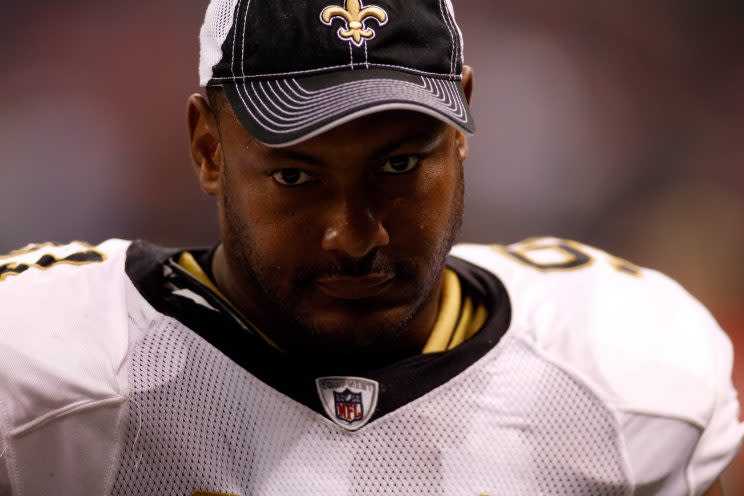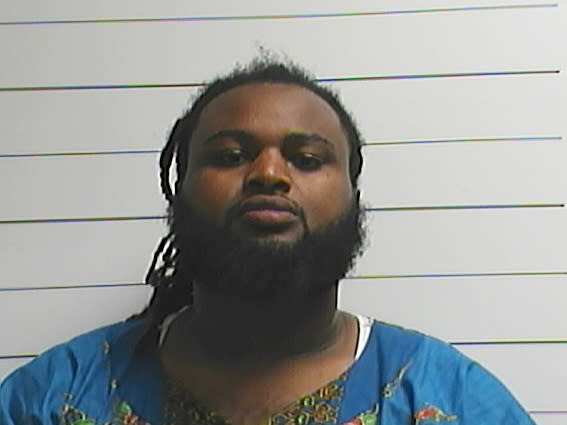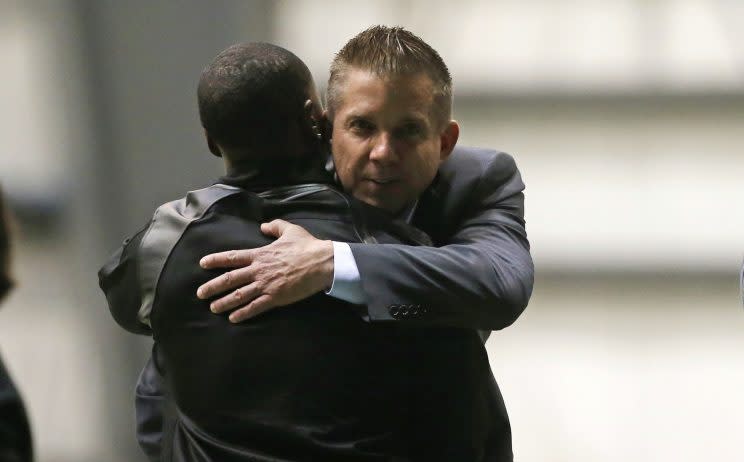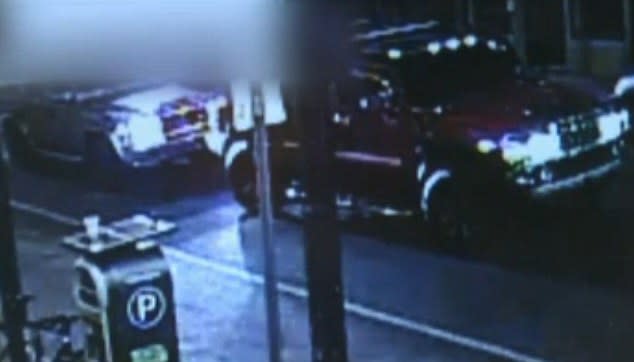Shooter defends himself – 'I didn't want to kill Will Smith' – but his account has serious flaws

NEW ORLEANS – Cardell Hayes was, at times, calm and soft-spoken. He was, at times, combative and exasperated. He was, for stretches, convincing. He was, for stretches, contradictory.
He was a 29-year-old on the stand of his own murder trial, attempting to get the jury to consider the circumstance and chaos that swirled around him on the night of April 9, when he shot and killed former New Orleans Saints star Will Smith.
“To see things from my perspective too,” Hayes said.
Hayes is facing three charges, including second-degree murder that could put him away for life. It all stems from an incident following a series of minor automobile accidents in the Lower Garden District, with Hayes’ Hummer 2 eventually hitting Smith’s Mercedes G-Wagon from behind. Verbal and physical altercations followed after a drunken Smith and two others, including friend Richard Hernandez, swarming Hayes and his best friend, Kevin O’Neal. In the chaos, Hayes shot Smith eight times. Smith’s wife, Racquel was struck once.
Hayes says he was under immediate threat and is arguing self-defense under Louisiana’s “stand your ground” law.
He took the stand in a packed and rapt courtroom in a Saturday session here at Orleans Parish Criminal District Court. A 12-person jury will hear closing arguments on Sunday and then get the case for deliberations.
The city is absorbed on the trial, part a debate over guilt, part because of a celebrity victim and part because the region is dealing with a string of senseless gun violence. As has been the case this week, the trial carried a Saints influence, most notably head coach Sean Payton solemnly sitting next to Smith’s widow.
*****
Hayes repeatedly pronounced his innocence. He sounds like a man who had spent eight months waiting for his turn to talk, his testimony full of passion if not always precision. That included getting emotionally choked up multiple times and breaking down in tears at one point while discussing what had been lost, while trying to blame everything on Smith as the initial aggressor.
“If [Smith] didn’t pose that threat would you still be home with C.J.,” defense attorney John Fuller asked, mentioning Hayes’ 6-year-old son.
“Yes,” Hayes said crying. “We’d both be with our families right now.”
It was enough to cause tears throughout the courtroom, including with a couple of jurors. He also pulled heartstrings by noting – in the present tense – that he coaches his son’s football team, even if his present incarceration makes that impossible. It was like he was wishing his reality were still his old life.

It was indicative of how sad and pointless this entire case is, one man dead, one woman injured and another standing trial over small car accidents accelerated into a deadly confrontation. Hayes said this trial was the second time this year he has been forced to fight for his life. There was frustration in his voice over the pressure he’s under.
Hayes testified that he was pursuing Smith’s vehicle after Smith had hit him from behind, only to pull away. Hayes considered it a hit-and-run. Smith, who had a .23 blood alcohol level, may have thought the accident was too minor to deal with or may have been trying to avoid a DUI. Either way, Hayes said he was trying to call 911 while O’Neal was trying to get the license plate number when he accidentally rear-ended Smith.
Hayes testified that he got out of the car and immediately saw Smith and Hernandez charging toward him. Hernandez took off his shirt and Hayes said he saw him use the shirt to wrap a shiny object, perhaps a knife. Then, Hayes said, Smith hit him with a cup that contained alcohol before punching him.
Hayes later testified that Smith punched him three or four more times. He testified that Hernandez punched him too. Then Hernandez saw that Hayes was carrying his gun and yelled out to Smith, “he’s got his gun. He’s scared. He’s not going to use it. He’s not going to do anything with it.”
At that point, Hayes, who is black, testified, Smith, who is black, said, “[racial slur] you got your gun? I’m going to get my gun and I’m going to show you what to do with it.”
Hayes said at this point, he saw Hernandez grab his wife, who was trying to hold him back, and leave, adding credence to the idea that shots might be fired. He also saw Smith’s wife continue to try to calm him down. “She said, ‘No baby no, it’s not worth it.’ ” Smith then, according to Hayes, headed back to the Mercedes, and reached inside. At that point, Hayes pulled out his weapon. He then said he saw Smith with a black handgun and then heard a gunshot, presumably from Smith’s gun.
“Pop,” Hayes said.
Hayes was asked, “what did you think was going to happen?”
“I am about [to] get shot and be killed,” Hayes said, adding at another point ” … I thought he was going to try to kill me.”
It was then that he said he opened fire, hitting Smith once in the side, he said, before losing control of the gun as it shot seven more times into Smith’s back as Smith slumped into the Mercedes.
“No, I didn’t want to kill Will Smith,” Hayes said. “I don’t want to kill anybody … I feel like this should have never happened.”
*****
The testimony was dramatic and forceful, Hayes sounding far more like an easy-going tow truck company owner, dog breeder and semi-pro football player who wound up in the wrong spot at the wrong time than some vicious street murderer. He certainly painted a more complex portrait of himself than the public had heard. This didn’t sound like the figure he has occasionally been portrayed. He was more the laid back, the easy-going regular guy his friends and family describe. They call him “Bear,” in part because of his burly, 6-foot-6 frame but also his approachable demeanor like the children’s doll, not something out in the woods.
However, very little of his story is backed up by previous witnesses or evidence in a trial that is in its fifth full day of testimony. It wasn’t just Racquel Smith shaking her head in disbelief as he spoke. On cross examination, prosecutor Jason Napoli blasted Hayes’ version of events, pointing out that despite a lengthy parade of testimony from witnesses, none of them, be they from his party, the Smith party or independent bystanders and neighbors said they neither saw nor heard much of what Hayes said he saw and heard.

“I know what I know,” he said.
Fair enough, but no one has testified that Smith ever threw a punch or was in a physical altercation with Hayes. Everyone said it was just verbal. There was no bruising or cuts noticed on either Hayes’ face or Smith’s hands that suggests as many as five punches thrown and landed by a former NFL Pro Bowl defensive lineman.
No one testified that Hernandez shouted that he saw the gun. No one testified that Hernandez had wrapped something in his shirt. No one else said they heard Smith promise to go get his gun and use it. No one ever saw Smith with a gun. No one ever heard a shot from Smith’s gun or any other gun not belonging to Hayes. Even Hayes never previously mentioned he saw Smith have a gun in a few brief comments to police. That detail would seem like the first thing someone accused of murder and claiming self-defense would mention.
“Everything you say is contradicted by everything everyone else said,” Napoli blasted.
“All I can say is what I say,” Hayes testified.
“You’d agree for the jury to believe you they’d have to essentially ignore every other witness they heard from,” Napoli repeated later.
“I’m not saying they have to ignore, this is what happened,” Hayes said.
*****
Then there is evidence from a ballistic expert and that of the coroner. Twice – once on direct, once on cross-examination – Hayes left the stand to physically show the distance between he and Smith and how he shot Smith. Hayes said he never got closer than 6 feet, if even that close.
However, the coroner said seven of the shots that went into Smith’s back came at a downward trajectory, which wouldn’t make sense under Hayes’ version. It would work in the description of other witnesses, who said Hayes was closer, even standing almost directly over Smith when he delivered the final volley.
“You’re saying you’re not standing above him?” Napoli asked.
“Yes,” Hayes said.
“So you curved the bullets into Will’s back?” Napoli countered.

Later, Napoli returned to the issue, noting the coroner said the bullets also entered Smith’s body from the left and went right, that doesn’t seem possible based on the distance and location Hayes said he was standing.
“How do the bullets enter left to right?
“I’m not an expert,” Hayes said. “I can’t explain it.”
“They’d have to go past Will, turn around to enter their body like that,” Napoli said. “Do you understand how that is impossible?”
One of the bullets wound up lodged inside Smith’s door and one of the shell casings wound up resting inside the car, according to police. Neither seems likely from the position Hayes described.
“How is that possible?” Napoli asked.
“I don’t know,” Hayes said.
“It’s physically impossible,” Napoli said, cranking up the disbelief.
“I can’t tell you how it happened.”
Later, on re-direct, defense attorney Fuller had Hayes recreate the scene a third time. On this occasion he stood maybe 3 feet away. The re-direct, which occurred after a lunch break, lacked Fuller’s signature passion. It felt like the air had been let out of the trial. Fuller, though, will likely rebound for closing.
As for ballistics, there is no witness who saw Smith with a gun. All accounts of hearing gunfire say they sounded the same – presumably from the same weapon. No one testified to hearing a second gun or any “pop” sound that might be confused with a gun.
Police collected nine spent shell casings from the scene and each one came from Hayes’ legally registered Ruger SR45 semi-automatic pistol. Police said they discovered Smith’s gun still tucked in between the driver seat and the front consul, where his wife said he placed it earlier in the day. An expert testified that while trace amounts of gun residue were discovered on Smith’s hands, they are consistent with him handling a weapon that day, not firing one, which would have left exponentially more residue.
Moreover, Hayes refused to acknowledge that one of his nine shots hit Racquel Smith in the legs, injuring her. “I didn’t shoot Racquel,” he said, apparently implying that Will Smith or some mystery gunman did.
Hayes faces additional charges on attempted murder and perhaps later on aggravated assault with a firearm in relation to shooting Racquel Smith. Since he admitted she was never a threat to him, arguing “stand your ground” is likely impossible. Saying it wasn’t him is probably his only defense.
*****
In an additional score for the state, Napoli was able to use Hayes’ words against him. Hayes said that he saw Hernandez leave the scene when Will Smith said he was going to get his gun. Hernandez has been labeled by every witness as acting wildly, or even ridiculously, in churning up the dispute.
If Hayes thought Hernandez was gone, however, then Hernandez’s actions can’t be blamed for Hayes making the decision to pull out his weapon and shoot Will Smith. It effectively eliminates one of the state’s biggest headaches, trying to explain away the loathsome, boorish behavior of Hernandez. It also cuts off some of Hayes’ argument that the scene was so uncertain and out of control from the start that he simply reacted. It basically moved the timeline to the final few seconds.
“So we can’t hold [Hernandez] responsible for your fear,” Napoli said.
“No,” Hayes said.
“He didn’t have anything to do with why you fired those shots,” Napoli said.
“No, he didn’t have anything to do with it,” Hayes said.
*****
In the end, Hayes, after months in jail got his chance to tell his story. He claims it is accurate and notes that the situation that was so confusing that there are understandable inconsistencies in everyone’s story. He conveyed himself as an unlikely murderer, an otherwise decent, likable guy simply giving his buddy a ride. Then he got rear-ended by a drunk driver and his life spun completely out of control. It’s almost impossible to imagine he was seeking any trouble that night, let alone out seeking to murder someone.
“I had no other options, my life was on the line,” Hayes said.
His voice was convincing. Some of his facts weren’t. As soon as Sunday, the jury gets to decide which is more important.

 Yahoo Sport
Yahoo Sport 





































